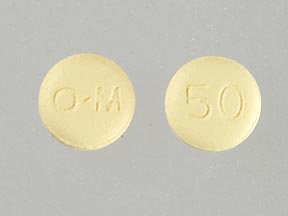Nucynta Solution Dosage
Generic name: tapentadol hydrochloride 20mg in 1mL
Dosage form: oral solution
Drug class: Opioids (narcotic analgesics)
Medically reviewed by Drugs.com. Last updated on Nov 20, 2023.
Important Dosage and Administration Instructions
Ensure accuracy when prescribing, dispensing, and administering NUCYNTA oral solution to avoid dosing errors due to confusion between mg and mL, which could result in accidental overdose and death. Ensure the proper dose is communicated and dispensed. The oral solution contains 20 mg tapentadol per milliliter (mL), when writing prescriptions, include both the total dose in mg and the total dose in volume.
Always use the enclosed calibrated measuring syringe when administering NUCYNTA oral solution to ensure the dose is measured and administered accurately. An oral syringe is supplied with dose marks corresponding directly to 2.5 mL (equals 50 mg) oral solution, 3.75 mL (equals 75 mg) oral solution, and 5 mL (equals 100 mg) oral solution.
Do not use household teaspoons or tablespoons to measure NUCYNTA oral solution, as using a tablespoon instead of a teaspoon could lead to overdosage.
Inform patients of the availability of FDA-approved patient labeling, Instructions for Use, for step-by-step instructions for patients on how to use the medicine bottle and the oral syringe.
Use the lowest effective dosage for the shortest duration consistent with individual patient treatment goals [see Warnings and Precautions (5)].
Initiate the dosing regimen for each patient individually, taking into account the patient's severity of pain, patient response, prior analgesic treatment experience, and risk factors for addiction, abuse, and misuse [see Warnings and Precautions (5.2)].
Monitor patients closely for respiratory depression, especially within the first 24-72 hours of initiating therapy and following dosage increases with NUCYNTA and adjust the dosage accordingly [see Warnings and Precautions (5.3)]
Initial Dosage
Initiate treatment with NUCYNTA oral solution in a dosing range of 50 mg (2.5 mL) to 100 mg (5 mL) every 4 to 6 hours as needed for pain.
On the first day of dosing, the second dose may be administered as soon as one hour after the first dose, if adequate pain relief is not attained with the first dose. Subsequent dosing is 2.5 mL (equivalent to 50 mg), 3.75 mL (equivalent to 75 mg), or 5 mL (equivalent to 100 mg) every 4 to 6 hours and should be adjusted to maintain adequate analgesia with acceptable tolerability.
Daily doses greater than 700 mg on the first day of therapy and 600 mg on subsequent days have not been studied and are not recommended.
NUCYNTA oral solution may be given with or without food [see Clinical Pharmacology (12.3)].
Conversion from NUCYNTA oral solution to NUCYNTA ER
Patients can be converted from NUCYNTA oral solution to NUCYNTA ER using the equivalent total daily dose of NUCYNTA oral solution and dividing it into two equal doses of NUCYNTA ER separated by approximately 12-hour intervals. As an example, a patient receiving 50 mg of NUCYNTA oral solution four times per day (200 mg/day) may be converted to 100 mg NUCYNTA ER twice a day.
Dosage Modifications in Patients with Hepatic Impairment
The safety and efficacy of NUCYNTA oral solution has not been studied in patients with severe hepatic impairment (Child-Pugh Score 10-15) and use in this population is not recommended [see Warnings and Precautions (5.15)].
Initiate treatment of patients with moderate hepatic impairment (Child-Pugh Score 7 to 9) with 50 mg no more frequently than once every 8 hours (maximum of three doses in 24 hours). Further treatment should reflect maintenance of analgesia with acceptable tolerability, to be achieved by either shortening or lengthening the dosing interval. Monitor closely for respiratory and central nervous system depression [see Clinical Pharmacology (12.3)].
No dosage adjustment is recommended in patients with mild hepatic impairment (Child-Pugh Score 5 to 6) [see Clinical Pharmacology (12.3)].
Titration and Maintenance of Therapy
Continually reevaluate patients receiving NUCYNTA oral solution to assess the maintenance of pain control and the relative incidence of adverse reactions, as well as monitoring for the development of addiction, abuse, or misuse [see Warnings and Precautions (5.2)]. Frequent communication is important among the prescriber, other members of the healthcare team, the patient, and the caregiver/family during periods of changing analgesic requirements, including initial titration.
If the level of pain increases after dosage stabilization, attempt to identify the source of increased pain before increasing the NUCYNTA oral solution dosage. If unacceptable opioid-related adverse reactions are observed, consider reducing the dosage. Adjust the dosage to obtain an appropriate balance between management of pain and opioid-related adverse reactions.
Discontinuation of NUCYNTA oral solution
When a patient who has been taking NUCYNTA regularly and may be physically dependent no longer requires therapy with NUCYNTA taper the dose gradually, by 25% to 50% every 2 to 4 days, while monitoring carefully for signs and symptoms of withdrawal. If the patient develops these signs or symptoms, raise the dose to the previous level and taper more slowly, either by increasing the interval between decreases, decreasing the amount of change in dose, or both. Do not abruptly discontinue NUCYNTA oral solution in a physically-dependent patient [see Warnings and Precautions (5.13), Drug Abuse and Dependence (9.3)].
More about Nucynta (tapentadol)
- Check interactions
- Compare alternatives
- Pricing & coupons
- Reviews (269)
- Drug images
- Latest FDA alerts (1)
- Side effects
- Dosage information
- During pregnancy
- Support group
- FDA approval history
- Drug class: Opioids (narcotic analgesics)
- Breastfeeding
- En español
Patient resources
Professional resources
Other formulations
Related treatment guides
Further information
Always consult your healthcare provider to ensure the information displayed on this page applies to your personal circumstances.


